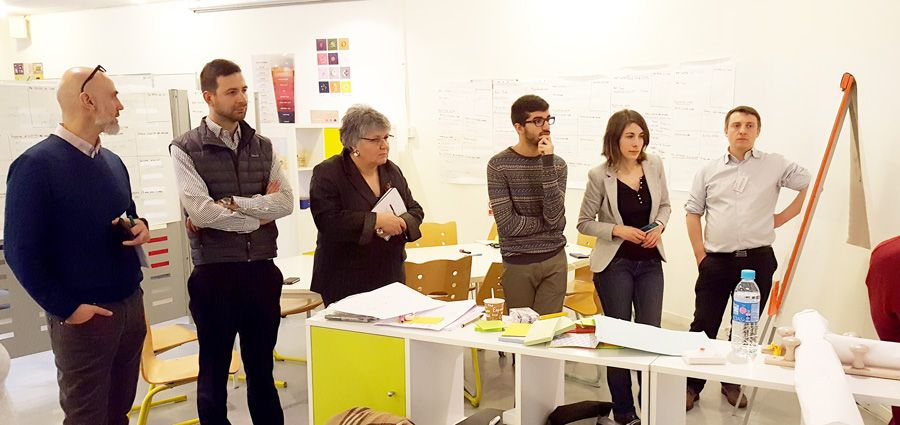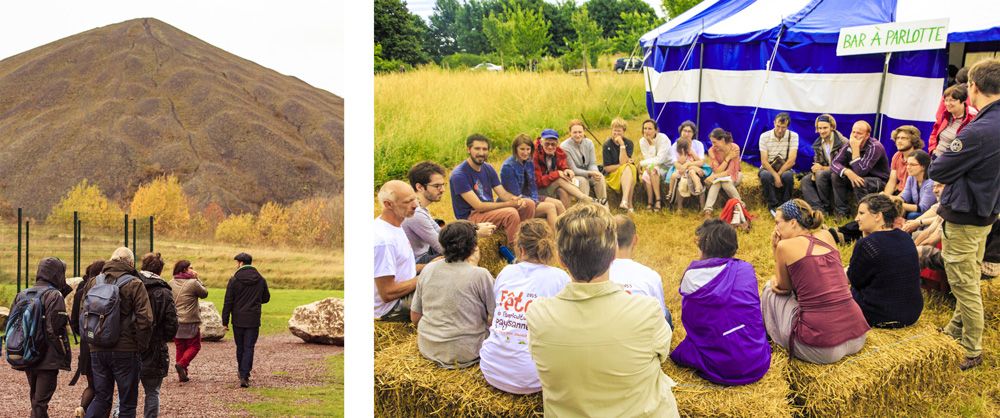[Insights] Stakeholder dynamics: what lessons are to be learned for the circular economy?
![[Insights] Stakeholder dynamics: what lessons are to be learned for the circular economy?](https://www.eclaira.org/data/sources/users/3/vignetteregardscroises.webp)
Circular economy projects are part of a long process calling for very close, continuous, multilateral and long-lasting relations between stakeholders and the structures. This leads to questions about the collective dynamics of these stakeholders.

INTERVIEW WITH XAVIER ROY, DIRECTOR-GENERAL OF FRANCE CLUSTERS
Based on his experience and observation in the field, Xavier Roy highlights factors of success when motivating stakeholders. Lessons that echo the circular economy.
“The vocation of France Clusters is to encourage inter-company cooperation and professionalize the function of network manager”.
“As intermediation structures, clusters are living organisms that are always evolving”
How do intermediation structures help to motivate stakeholders?
The starting point is the individual expression of a need by companies or other entities such as universities or laboratories.
For motivation to take place, this expression must be immediately passed on by a structure (such as a local authority, a chamber of commerce, or a cluster) that is attentive to individual needs and that will lead to the construction of a collective response.
For clusters, listening to needs is based on an individual diagnosis of each company that is a member of the cluster. The summary of the diagnosis is sent to all members. It encourages them to share the strengths and weaknesses of the collective and the territory, the motivations and the arguments that bring them together and the construction of cooperative projects.
What are the key factors for successful stakeholder motivation?
Above all, skills.
The ability to listen to individual needs in conjunction with the ability to imagine a collective response is the first skill required.
Neutral and legitimate group leadership is equally essential. The question of legitimacy is addressed in the diagnosis. Sometimes the structure that initiates the diagnosis and initiates the dynamics at the beginning is not considered legitimate in the eyes of the stakeholders to lead the rest of the action. This implies accepting that legitimacy be questioned and that it might be necessary to “hand over” or to find the right people to run this or that action.
A strong propensity for adaptation and evolution is also required because a cluster is above all a living organism that changes over time in all its aspects.
From a geographical point of view, stakeholder motivation of starts at the level of an employment area. Over time, the network expands, as it is the projects that guide cooperation. Finding the right partnership then takes precedence, and members add complementary activities to innovate, produce better and produce more.
This implies being particularly agile.
Too much structuring is not necessarily the right approach because it risks slowing down the growth of the dynamics and therefore that of the project.
There is also the ability to bounce back.The first actions are short-term ones, with practical, visible achievements (communication operation, shared purchases, etc.). The idea is to draw lessons from these and move step by step towards a strategic approach, as confidence among those involved grows and they get used to cooperating. Starting out with strategic thinking makes it less easy to create a link between those involved, especially when they consider themselves competitors at the outset.
How can stakeholder dynamics be consolidated and perpetuated?
By setting up governance driven by those who will benefit from it. This is often structured around an association (the cluster) that will have a budget, a team of group leaders, etc. as a GIE, an SAS, or an SCIC.
In addition to these organizational aspects, collective economic dynamics will be perpetuated from the moment that the strategy is in harmony with the territorial innovation strategy. The relationship with the territory is essential to be able to look far into the future.
In any case, these dynamics are about human relations and are therefore by nature very fragile, hence the importance of the relationship of trust and shared values.
INTERVIEW WITH JEAN-FRANÇOIS CARON, MAYOR OF LOOS-EN-GOHELLE

A few years ago, after mining came to an end, the prospects for the town seemed limited. “Yesterday was yesterday. We need to recognize past history but we must turn the page and reinvent the future”, says Jean-François Caron. This is how a new story began. Stakeholders in a territory are invited to think collectively “What sort of town do we want for tomorrow?” and to take part in building that project. Shared diagnosis leads one to ask questions about what strategy to use to correct problems of polluted water, high energy bills due to poorly insulated housing, landscapes damaged by past activities, etc. Loos-en-Gohelle’s territorial approach to sustainable development was launched.
What are the keys to motivating stakeholders around your sustainable development policy?
Loos-en-Gohelle's sustainable development policy involved seeing the area in a long-term perspective, rolling out an action plan while actively involving people in the area and developing a systemic strategy that simultaneously cuts across social, economic and environmental issues. That was the starting point.
To this is added group leadership, notably political, via an approach based on listening and empathy.
Creating trust is paramount. Establishing itself over time, it gives the ability to take initiatives, and therefore risks. It is gained from players who are motivated by respect for commitments, action (which is central), monitoring the facts, and coherence in attitude and in respect.
How can stakeholder dynamics be consolidated and perpetuated?
The key factor is the result.
The mining area’s application for UNESCO World Heritage status was the subject of much scepticism outside of Loos-en-Gohelle, whereas locally it was considered very positively as an additional challenge. This is linked to the results of challenges identified in previous years. For example, the town was the first in France to launch eco-construction operations which at once earned it recognition from stakeholders in the area.
When, ten years later, the town had acquired UNESCO's World Heritage status, the collective authorized other challenges, which were increasingly ambitious.
Image is also a factor favouring consolidation. Today, economic players are taking an interest in the town. People want to be part of the adventure. We are regularly called on by project promoters who want to set up in the area.
"THE RELEASE OF COLLECTIVE ENERGY COMES FROM THE CLIMATE OF TRUST THAT WE HAVE SET UP"
What do you think are the specific features of stakeholder motivation applied to the circular economy?
Seeing how the development model can create public goods is what sustainable development initiatives are all about today. Circular economy projects help create common goods. This new approach to the economy by linking local supply and demand, incorporating the issue of public goods, helps to make individual interests converge.In this way, collective action involves organizing all those involved (all stakeholders) and makes massification possible.
For example, for a local organic farming project, resistance will focus on the economic viability of the farms, the high costs and organizational difficulties for school canteens, etc. On the other hand, if this is associated with a massive public order for meals in the school canteens of the 36 towns that make up the intercommunality that Loos-en-Gohelle belongs to, this creates a real market for farmers, and is very competitive for local authorities.
-----
Photo credits:
©France Clusters - Meeting of the working group of agro-food clusters organized as part of France Clusters group-leading activities
©Ville de Loos en-Gohelle including the 2nd Fête de l'agriculture paysanne
et du mieux-vivre alimentaire in Loos-en-Gohelle
--------------------------------------------
Source: ECLAIRA - Newsletter Number 7 / June 2017
Newsletter edited by CIRIDD with support from Région Auvergne - Rhône-Alpes
See all the ECLAIRA newsletters
---